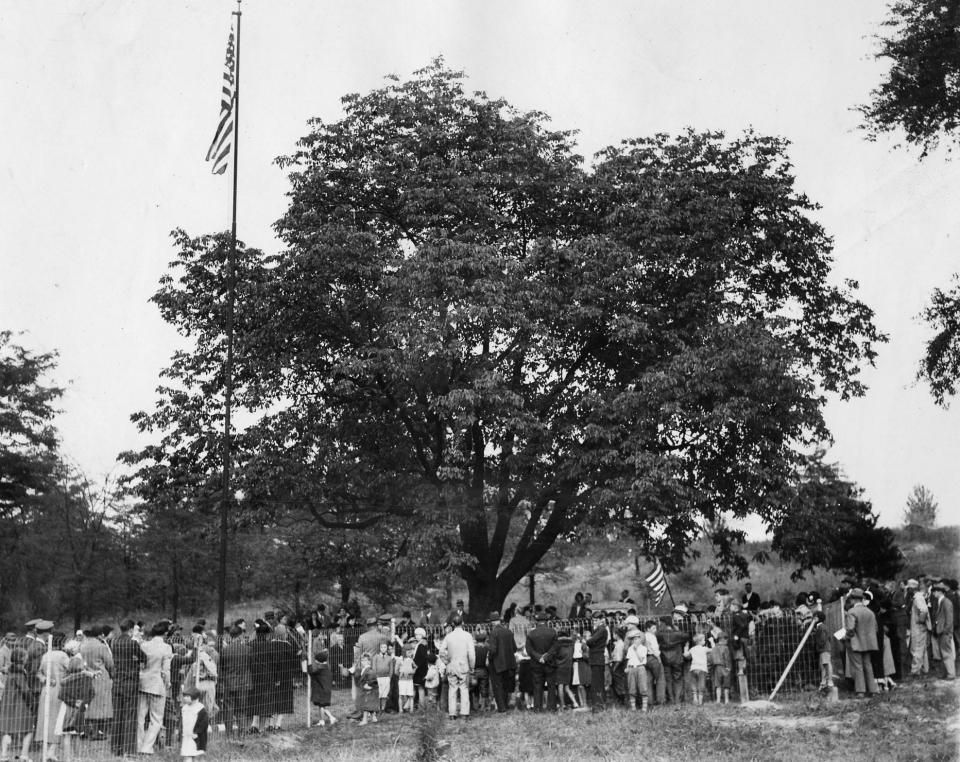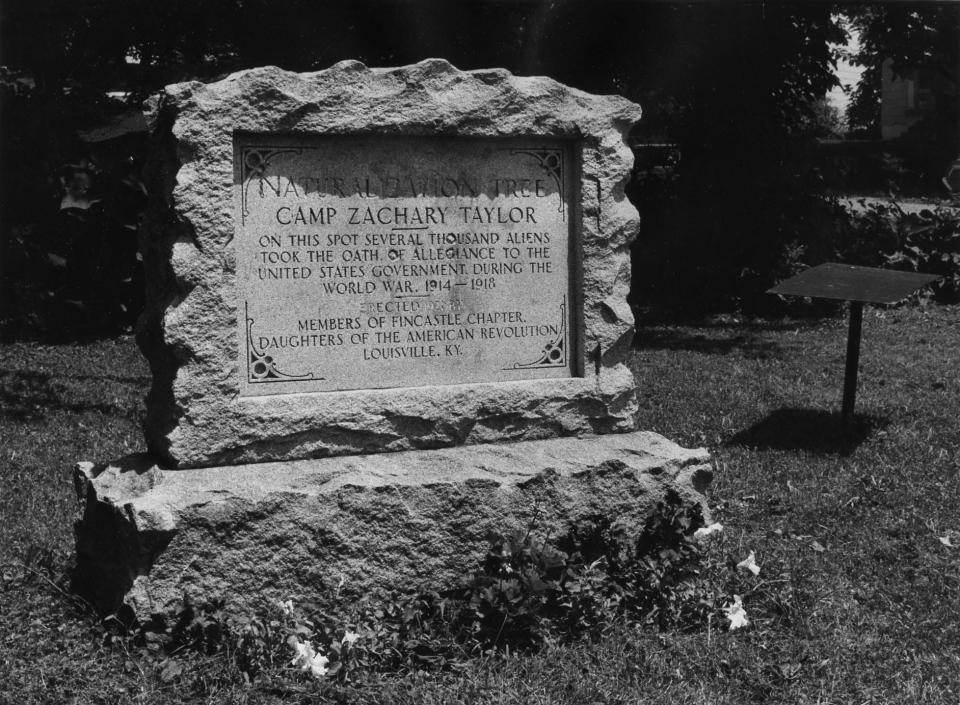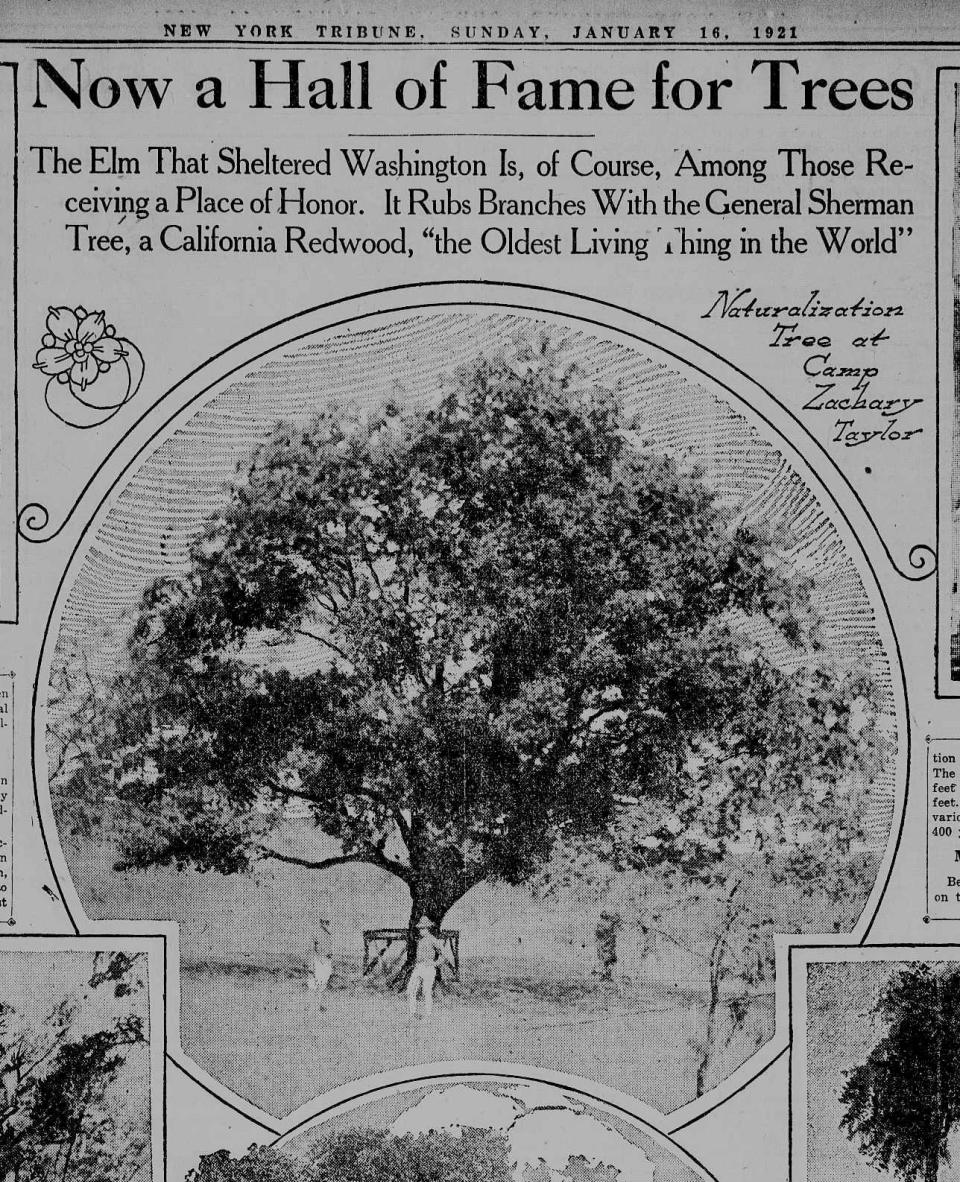An anecdote in a story on page 10 of the August 16, 1918 edition of the Courier Journal was the first reference to a ‘naturalization tree’ at Camp Zachary Taylor in Louisville.
World War I had not yet ended and Camp Zachary Taylor was one of 16 national Army camps in the United States that trained more than 125,000 soldiers, according to the Kentucky Historical Society. Although the camp closed in 2020, one prominent feature remained – the Naturalization Tree.
“Nine hundred and fifty aliens will be naturalized tomorrow morning at Camp Zachary Taylor under the ‘naturalization tree’ on Lee Avenue. Judge James Cochran, of Covington, will preside over the court, and General Austin is invited to participate in the ceremonies” , said the August 16 newspaper.
A few days later, on August 21, 1918, the newspaper said the ceremony was “the largest number of men ever taken into the arms of this country at the same time in any American cantonment. The tree was selected by the naturalization officer, Lt. Perkins .It is one of the many objects of interest on the reservation and is just behind the camp’s laundry room. When the aliens are sworn in, they have a full view of the American flag as they fly over the camp.


After the closure of Camp Zachary Taylor, there was concern about what would happen to the tree, which had become a landmark for the city along with the soldiers stationed there and the immigrants who obtained their citizenship under it.
“Woodman, spare that tree!” was the first paragraph of a story that appeared in the January 23, 1921 edition of the Courier Journal discussing the efforts of the Jefferson Post of the American Legion to save the tree.
“The tree is declared to be a symbol, like nothing else, of this country’s remarkable war record in combining, in a short space of time, all the strange and diverse forces of the population into one unit – the American citizen. It represents the entrance at Camp Taylor, and in every military camp existing during the war, of thousands of foreigners, in many of whom there was a feeling that they owed nothing to this country except what could be derived from it, and its emergence in a short space of time as American soldiers.”


The Naturalization Tree was chosen by the American Forestry Association for inclusion in the Tree Hall of Fame in Washington, D.C., earlier that year.
“A photograph of the Naturalization Tree will stand side by side with that of the famous Washington Elm, in Cambridge, Massachusetts, under whose branches (George) Washington assumed command of the Continental Army, July 3, 1775.”
A few months later, news arrived that the tree would survive, as said under the March 2, 1921 headline, “Historic Tree Will Be Saved,” which included a note that the Jefferson Post of the American Legion would give up its claim to the tree. so that the Fincastle Chapter of the Daughters of the American Revolution could take control.


The tree would not last forever, being felled after a lightning strike in 1951.
“Camp Taylor’s ‘Naturalization Tree,’ a 140-year-old ash tree commemorated by the Fincastle Chapter, DAR, in 1921, was yesterday aged through surgery. Two of its enormous limbs, broken in a recent wind storm, were removed after falling into the yard adjacent to the lot on the corner of Kentucky and Lee.
A monument dedicated to the tree in 1921 remains, but has been moved from its original location to Camp Taylor Memorial Park, near where Poplar Level Road meets the Watterson Expressway.
This article originally appeared in the Louisville Courier Journal: Retro Louisville: Whatever Happened to the Naturalization Tree?



































